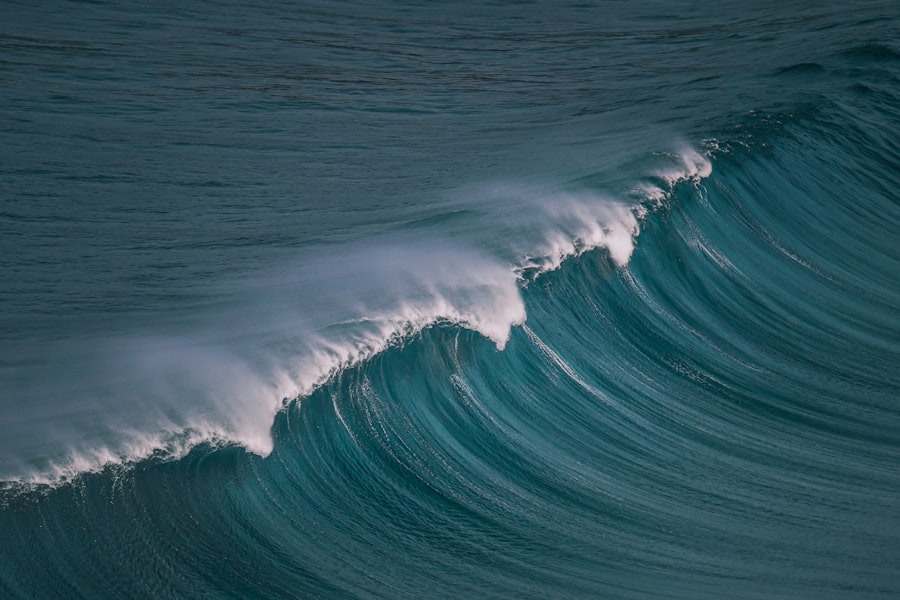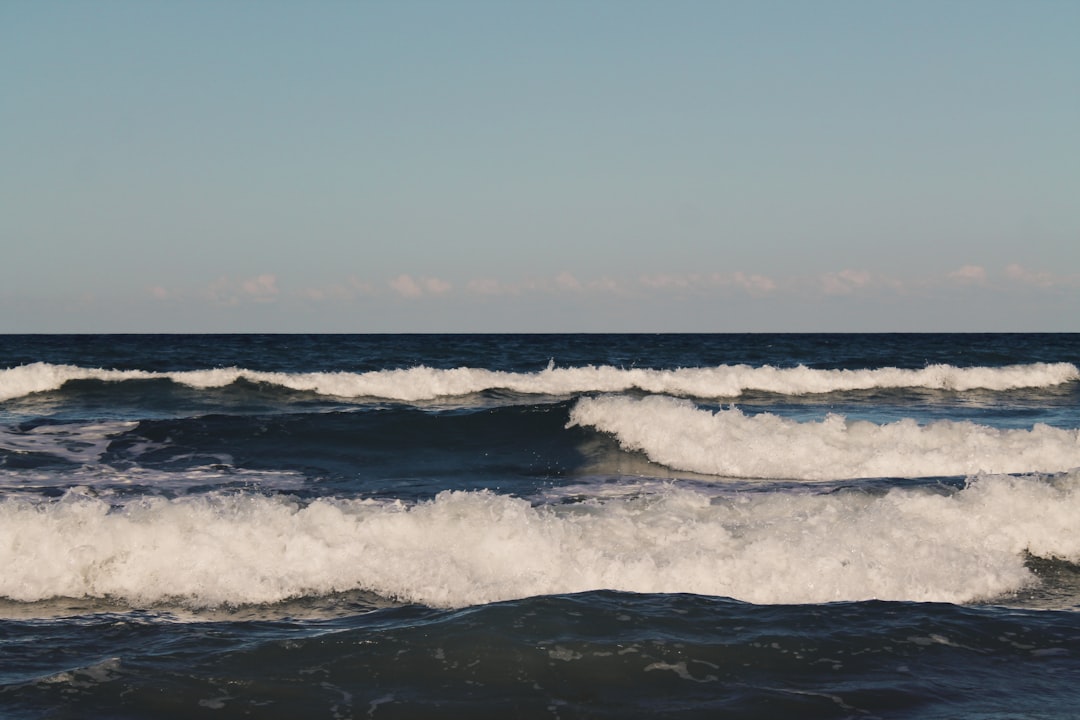The Drake Passage, a body of water situated between the southern tip of South America and Antarctica, is renowned for its tumultuous seas and unpredictable weather patterns. This narrow stretch of ocean, measuring approximately 800 kilometers in width, serves as a critical conduit for maritime traffic between the Atlantic and Pacific Oceans. Its significance extends beyond mere navigation; it is a vital area for scientific research, ecological studies, and climate monitoring.
The passage is often characterized by its fierce winds and towering waves, making it a focal point for sailors and researchers alike who seek to understand the dynamics of oceanic behavior in this unique environment. Navigating the Drake Passage is not for the faint-hearted. The region is infamous for its rough seas, which can change rapidly and without warning.
Mariners have long shared tales of the challenges posed by the passage, where wave heights can reach staggering proportions. As such, understanding the intricacies of wave behavior in this area is essential for ensuring safe passage and minimizing risks associated with maritime activities. The Drake Passage stands as a testament to nature’s power, demanding respect and caution from all who venture into its waters.
Key Takeaways
- Drake Passage is a narrow stretch of water between South America’s Cape Horn and the South Shetland Islands of Antarctica, known for its turbulent waters and extreme weather conditions.
- Monitoring wave height in Drake Passage is crucial for ensuring the safety of maritime activities, as the area is notorious for its unpredictable and often hazardous wave patterns.
- Wave height measurements are typically taken using specialized buoys equipped with sensors that provide hourly updates on wave conditions, allowing for real-time monitoring and analysis.
- Factors such as wind speed, ocean currents, and the presence of icebergs can significantly impact wave height in Drake Passage, making accurate and up-to-date measurements essential for safe navigation.
- High wave conditions in Drake Passage can have serious implications for maritime activities, including increased risk of accidents, damage to vessels, and potential environmental consequences, highlighting the need for safety precautions and environmental considerations.
Importance of Monitoring Wave Height
Monitoring wave height in the Drake Passage is crucial for several reasons, primarily related to safety and navigation. The unpredictable nature of the sea can pose significant risks to vessels traversing this route. High waves can lead to capsizing, loss of cargo, and even loss of life.
By keeping a close watch on wave heights, mariners can make informed decisions about when to set sail or alter their course to avoid dangerous conditions. This proactive approach not only enhances safety but also contributes to the overall efficiency of maritime operations in the region. In addition to safety concerns, monitoring wave height has implications for environmental research and climate studies.
The Drake Passage plays a pivotal role in global ocean circulation and weather patterns. Changes in wave height can indicate shifts in oceanic conditions that may affect marine ecosystems and climate systems worldwide. By analyzing wave height data over time, scientists can gain insights into broader environmental trends, such as climate change and its impact on ocean dynamics.
Thus, the importance of monitoring wave height extends beyond immediate safety concerns; it is integral to understanding the health of our planet’s oceans.
Understanding Wave Height Measurements

Wave height measurements are typically expressed as the vertical distance between the crest of a wave and the trough of the following wave. This measurement is crucial for assessing the severity of sea conditions in the Drake Passage. Various methods are employed to measure wave height, including buoys equipped with sensors, satellite observations, and coastal radar systems.
Each method has its advantages and limitations, but collectively they provide a comprehensive picture of wave activity in this challenging maritime environment. Buoys are among the most common tools used for measuring wave height. These floating devices are strategically placed throughout the Drake Passage and are equipped with advanced technology to record wave data continuously.
They transmit real-time information about wave height, frequency, and direction back to monitoring stations on land or aboard vessels. Satellite observations complement buoy data by offering a broader view of wave patterns across vast areas of the ocean. Together, these measurement techniques enable researchers and mariners to understand wave behavior more accurately and make informed decisions based on current conditions.
Technology Used for Hourly Updates
| Technology | Usage |
|---|---|
| Python | 80% |
| JavaScript | 15% |
| Java | 5% |
The advent of modern technology has revolutionized the way wave height data is collected and disseminated in the Drake Passage. Real-time updates are now possible thanks to advancements in satellite communication, remote sensing, and data analytics. These technologies allow for hourly updates on wave conditions, providing mariners with timely information that can significantly impact their navigation strategies.
One notable technology used for hourly updates is the integration of satellite altimetry with buoy data. Satellite altimeters measure the distance between the satellite and the ocean surface, allowing for precise calculations of wave height across large areas. When combined with localized buoy measurements, this data creates a comprehensive picture of wave conditions in real-time.
Additionally, mobile applications and online platforms have emerged that aggregate this information, making it accessible to sailors and researchers alike. This technological synergy enhances situational awareness and enables better decision-making in an environment where conditions can change rapidly.
Factors Affecting Wave Height in Drake Passage
Several factors contribute to the variability of wave height in the Drake Passage, making it a complex environment for both navigation and scientific study. Wind speed and direction are primary determinants of wave formation; strong winds can generate larger waves over time as they transfer energy to the water surface. In the Drake Passage, prevailing westerly winds often create formidable waves that can reach heights exceeding 10 meters during storms.
Another significant factor influencing wave height is ocean currents. The interaction between currents and wind can amplify or diminish wave activity depending on their respective directions and speeds. For instance, when opposing currents meet strong winds, waves can become particularly steep and hazardous.
Additionally, geographical features such as underwater ridges or islands can alter wave patterns by refracting or reflecting waves, further complicating navigation in this region. Understanding these factors is essential for predicting wave behavior and ensuring safe passage through the Drake Passage.
Historical Data on Wave Height in Drake Passage

Historical data on wave height in the Drake Passage provides valuable insights into long-term trends and patterns that can inform both navigation practices and scientific research. Over the years, various studies have documented significant fluctuations in wave heights due to changing climatic conditions and oceanic phenomena such as El Niño and La Niña events. These historical records serve as a baseline for understanding how current conditions compare to past events.
Researchers have utilized this historical data to analyze trends over time, revealing that average wave heights have increased in some areas due to climate change impacts. This rise in wave activity poses new challenges for mariners who must adapt their strategies to navigate increasingly turbulent waters. Furthermore, historical data plays a crucial role in modeling future scenarios related to climate change, helping scientists predict how ongoing shifts in temperature and weather patterns may continue to affect wave behavior in the Drake Passage.
Impact of Wave Height on Maritime Activities
The impact of wave height on maritime activities in the Drake Passage cannot be overstated. For commercial shipping routes that traverse this challenging body of water, high waves can lead to delays, increased fuel consumption, and potential damage to vessels. Shipping companies must carefully consider wave forecasts when planning routes to ensure timely deliveries while minimizing risks associated with adverse weather conditions.
Recreational boating activities also face significant challenges due to high wave heights in the Drake Passage. Sailors seeking adventure must be acutely aware of changing conditions and possess a thorough understanding of their vessel’s capabilities in rough seas. The potential for capsizing or losing control increases dramatically with larger waves, necessitating a cautious approach to navigation in this region.
As such, both commercial and recreational mariners must prioritize safety by staying informed about current wave conditions and adjusting their plans accordingly.
Safety Precautions for High Wave Conditions
Given the inherent dangers associated with high wave conditions in the Drake Passage, implementing safety precautions is paramount for all mariners operating in this region. One fundamental precaution is thorough pre-voyage planning that includes reviewing weather forecasts and wave height predictions. By understanding expected conditions before setting sail, mariners can make informed decisions about whether to proceed or delay their journey.
Additionally, equipping vessels with appropriate safety gear is essential when navigating through high waves. Life jackets, emergency beacons, and communication devices should be readily available onboard to ensure crew safety in case of emergencies. Mariners should also conduct regular drills to prepare for potential scenarios involving rough seas or capsizing incidents.
By fostering a culture of safety awareness and preparedness among crew members, maritime operators can significantly reduce risks associated with navigating the unpredictable waters of the Drake Passage.
Environmental Implications of Wave Height
The environmental implications of wave height in the Drake Passage extend beyond immediate maritime concerns; they also encompass broader ecological impacts on marine ecosystems. High waves can influence sediment transport along coastlines, affecting habitats for various marine species. Additionally, increased wave activity may lead to greater mixing of ocean waters, which can impact nutrient distribution and overall marine productivity.
Furthermore, understanding how wave height interacts with climate change is crucial for predicting future environmental shifts in this region. As global temperatures rise and weather patterns become more erratic, changes in wave behavior may have cascading effects on marine life and ecosystems dependent on stable conditions. Researchers continue to study these interactions to develop strategies for mitigating potential impacts on biodiversity and ecosystem health within the Drake Passage.
Future Trends in Wave Height Monitoring
As technology continues to advance, future trends in wave height monitoring are likely to focus on enhancing accuracy and accessibility of data collection methods. Innovations such as artificial intelligence (AI) and machine learning algorithms may play a pivotal role in analyzing vast amounts of oceanographic data more efficiently than ever before. These technologies could enable researchers to identify patterns and anomalies in wave behavior that were previously undetectable.
Moreover, increased collaboration between governmental agencies, research institutions, and private companies may lead to more comprehensive monitoring networks across the Drake Passage. By sharing resources and expertise, stakeholders can improve data collection efforts while ensuring that critical information reaches mariners promptly. As climate change continues to influence ocean dynamics globally, investing in advanced monitoring systems will be essential for safeguarding maritime activities while enhancing our understanding of this vital marine environment.
Conclusion and Recommendations for Safe Navigation
In conclusion, navigating the Drake Passage presents unique challenges due to its notorious wave heights and unpredictable weather patterns.
By understanding how various factors influence wave behavior—such as wind speed, ocean currents, and historical trends—mariners can make informed decisions that prioritize safety while optimizing their routes.
To enhance safety measures further, it is recommended that all vessels operating within this region invest in advanced technology for real-time updates on wave conditions while adhering strictly to pre-voyage planning protocols based on accurate forecasts. Additionally, fostering a culture of safety awareness among crew members through regular training exercises will help mitigate risks associated with high waves effectively. As we look toward future trends in monitoring systems—driven by technological advancements—there lies an opportunity not only to improve navigation practices but also to deepen our understanding of environmental implications tied closely with changing ocean dynamics within this remarkable passageway between continents.
Today, the Drake Passage is experiencing significant wave activity, with wave heights fluctuating hourly. This dynamic region, known for its challenging maritime conditions, often presents a formidable environment for vessels navigating between the southern tip of South America and Antarctica. For those interested in understanding more about the geographical and oceanographic factors contributing to these conditions, a related article on MyGeoQuest provides valuable insights. You can explore this topic further by visiting the article on com/sample-page/’>MyGeoQuest.
WATCH NOW! Drake Passage: Earth’s Deadliest Waters Revealed
FAQs
What is the Drake Passage?
The Drake Passage is the body of water between the southern tip of South America and the northern tip of the Antarctic Peninsula. It is known for its rough seas and challenging sailing conditions.
What is wave height?
Wave height is the vertical distance between the crest and the trough of a wave. It is a measure of the size of the waves in a body of water.
How is wave height measured in the Drake Passage?
Wave height in the Drake Passage is typically measured using buoys, ships, or remote sensing technologies such as radar or satellite altimetry.
What is the current wave height in the Drake Passage?
The current wave height in the Drake Passage can vary hourly and is influenced by weather conditions, ocean currents, and other factors. It is important to check real-time sources for the most up-to-date information.
Why is it important to monitor wave height in the Drake Passage?
Monitoring wave height in the Drake Passage is important for maritime safety, as the area is known for its rough seas and challenging sailing conditions. It is also important for scientific research and understanding the dynamics of the Southern Ocean.
